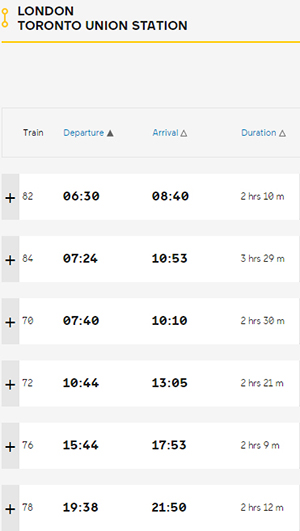Northerners are once again finding themselves taking a back seat to the transportation interests and concerns of politicians in Southern Ontario.
The Ministry of Transportation very recently unveiled a pilot project for GO Train service between Toronto and London — by way of Kitchener, Stratford and St Mary’s. The trial runs are expected to cost Ontario taxpayers $2.5 million annually and generate 25,000 trips a year.
This is in addition to the $82.4 million spent on building Bloomington Station, which was added to the Richmond Hill GO Train route earlier in June.
The province has also awarded a $757.1 million contract to begin designing and building the Scarborough Subway Extension and another $5 billion for the extension of the Eglinton Crosstown light rail project in Toronto, which is on top of the $12 billion already spent on the first phase of the line.
Meanwhile here in Northern Ontario, we’re told to wait patiently for the results of yet another study. Despite the promise of revived rail service to the North — no later than by the end of the government’s first term, the earliest date we’re allegedly going to see a passenger train is now 2024 or 2025.
How can the Premier, the Minister of Transportation and Northern MPPs possibly justify postponing the revival of our sole passenger train, while in the same breath — amidst a worldwide pandemic — move forward with projects in Greater Toronto and duplicate VIA Rail’s existing service through Southwestern Ontario?
 There are up to six daily departures connecting London and Toronto. These trips range from two to three-and-half hours in duration.
There are up to six daily departures connecting London and Toronto. These trips range from two to three-and-half hours in duration.
In contrast, one full-length trip on the new GO service is expected to take in excess of four hours to complete.
How is it that London is provided with an additional, yet slower passenger train, while communities in the districts of Muskoka, Parry Sound, Nipissing, Temiskaming and Cochrane remain sidelined with no service whatsoever to Toronto at Union Station?
This flies in the face of the real change called for by the MPP for Nipissing and his colleagues while campaigning for office in 2018.
Northerners can’t be expected to ride the pieces of paper used to draft up the passenger rail plan, can they?
No love shown for the way
On the federal front, VIA Rail appears no more preoccupied with the needs of Northern travelers, even though its latest sales campaign urges us all to “love the way.” As the Crown corporation resumes most of its runs through the Québec-Windsor corridor, it continues to delay reinstating portions of remote region services it temporarily cut a year and a half ago due to COVID-19.
![]() The Canadian and the Sudbury-White River trains are barely operating on a once-a-week basis, instead of their usual twice- and thrice-weekly runs, respectively. This is causing undue hardship for Northerners who either reside or travel through these two isolated regions of Ontario.
The Canadian and the Sudbury-White River trains are barely operating on a once-a-week basis, instead of their usual twice- and thrice-weekly runs, respectively. This is causing undue hardship for Northerners who either reside or travel through these two isolated regions of Ontario.
For a company so concerned with the needs of the market, it’s astonishing how VIA has been unable or unwilling to make any improvements to its existing services in the North.
How else does one rationalize bypassing Thunder Bay, the largest city in Northwestern Ontario, or stopping just short of a national park — Pukaskwa — and the largest fresh water lake in the world — Lake Superior?
Adding insult to injury is that the Sudbury-White River service is the only one of VIA’s routes without real-time GPS arrival and departure information for passengers.
The hoops one must jump through to travel in Northern Ontario are just staggering and nonsensical!
Transportation is a microcosm of a much bigger issue in Canadian society: Lots of promises and sizzle, but little substance in terms of tangible deliverables.
Governments and Crown corporations like Ontario Northland and VIA Rail technically provide a teensy bit of service in this region. However, they routinely neglect to adapt and adopt solutions that would better serve the North.
We have to ask ourselves what exactly are the roles of these politicians and bureaucrats, if not to improve the quality of life of those with real needs?
What will it take for our elected officials at Queen’s Park to follow through with their commitment to restore the Northlander — before the end of their term?
How much longer will it take for the Feds and VIA Rail to fully restore remote region services to pre-pandemic levels and once again connect people to places they need to get to?
Éric Boutilier is the founder of Northern Tracks Blog
 Wawa-news.com You can't hear the 'big picture'!
Wawa-news.com You can't hear the 'big picture'!
